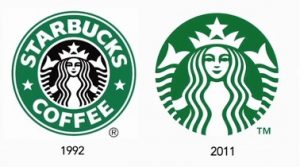Everyone knows her. Some dislike her. Ultimately, she’s one of the wealthiest women in the world. She has her hands in everything from entertainment, to clothing, to gaming. She is even currently studying to be a lawyer. Kim Kardashian seems like she may have it all, but her latest business venture may not be what she was hoping for.

She recently announced the release of her own skincare line, “SKKN by Kim.” Pronounced “skin,” the name has recently been called into question. Kim has recently applied for several trademarks for the new line, which may or may not be granted.
What is a trademark?

A valid trademark is any word, symbol (such as a logo), or other identifier that identifies and distinguishes goods or services from others. Trademarks indicate that a good or service comes from a specific source. If you were to look at a Starbucks logo without the writing, you would likely be able to name that it is Starbucks’ logo. The logo and the name are each trademarks; by looking at them, they indicate the source, among other things. Marks will never be granted if they are generic; this means the word or phrase represents an entire class of goods or services. Things that are considered generic, such as the word “chair” for all chairs, cannot be trademarked because the mark is not distinctive.
If a trademark includes information that describes the good or service, it is deemed “descriptive.” Descriptive words or phrases (names, slogans, etc.) are not granted trademark rights unless they have “secondary meaning.” Secondary meaning is acquired if it becomes associated with a single commercial source in the minds of consumers. An example of this is is Pizza Hut; this is a mark that describes the good they sell (i.e. pizza). Kim’s latest mark is descriptive because SKKN by Kim describes the fact that it is a skincare line designed by Kim.
Trademark Registration
Kim Kardashian has applied for several trademarks for her new line. As a trademark owner, she will have the right to prevent others from using the same or similar “marks” if it would likely cause confusion for consumers. Trademark owners should avoid confusing consumers with names that are similar to existing ones. Though not required, many companies preferred to have registered trademarks with the USPTO (United States Patent and Trademark Office) because it affords them rights against infringers. Kim Kardashian applied to the USPTO for nineteen marks for her new skincare line. After review, the USPTO publishes the application for opposition, a period of 30 days in which third parties can contest the mark. A common basis for others to contest is if the applied-for mark is too similar to an existing mark, such that consumers would be confused. After this period, if there is no opposition, the USPTO can approve the application.
What is SKKN by Kim?

Between March and July of 2021, Kim filed nineteen trademarks for (variations of) “SKKN by Kim” (two of which have been canceled – see photo above.) The line will include cosmetics, face creams, vitamins/supplements, home goods (such as bed and bath products), exercise equipment, phone accessories, and more.
Some of Kim’s trademarks were opposed by Beauty Concepts LLC, who had recently filed its own applications under a very similar name as Kim’s mark. Beauty Concepts LLC, a New York-based company, filed an application for its own trademark, SKKN+, and claimed that they have been using the mark since 2018 for salon services.
There is an issue if other marks can prove they were in the space and using their marks first. There is an important distinction between using the mark first and registering first. The Senior (first) user is the first to put their mark on a good or service and use it in commerce. The Senior user can continue to use the mark, even after a later user federally registers a similar mark. However, the Senior user will not be able to expand its use beyond the original geographic area in which it was used. If the Senior user is also first to register, their use and registration can bar a junior user if there is a likelihood of confusion for consumers.
Registering first, as Kim did, is important for trademarks, but being the first user, as Beauty Concepts is, may prove more significant – at least between these two parties. Beauty Concepts sent a cease and desist letter to Kim, ultimately threatening legal action if she continued to use her trademark. When Kim disregarded the letter, Beauty Concepts sued her.
Though Beauty Concepts may have been the first to sue Kim, they aren’t the only one with a similar trademark. Supermodel Lori Harvey registered her mark “SKN by LH,” in January, before Kim registered her marks, but Harvey had not used her mark on goods or services at the time of her application. Actual use in commerce must happen to federally register a mark, as well as to exclude others from using a similar mark.
Creative or common?
Though the word “skin” is used in other brands’ trademarks, the fact that Kim has created the mark “SKKN by Kim” adds distinction between her mark and others. However, one of the main concerns with Kim’s mark is the fact that it may likely be confusing for consumers, which could compel the USPTO not to register her mark. Additionally, the brands at issue with Kim’s own trademark are also involved in roughly the same industry: the beauty industry, further adding to likelihood of confusion Also, “Skin” for skincare products is “descriptive,” which means it merely describes the kind of good or service it is used on. Descriptive marks are more challenging to register because of the requirement to show secondary meaning, meaning that the term refers to a specific source.
Fortunately for Kim, there is a distinction in adding “by Kim.” This addition can likely help her case, since she is not just asking for rights over the word “skin,” but instead over a phrase that also uses her own name. Adding her name helps to identify the source for consumers, which is more challenging to say about the other brands mentioned above. If Kim can persuade the USPTO, she may be able to register the name.
My take:
It seems that Kim’s product line is significantly more expansive than those of her competitors, whose marks apply to more narrow products/services.
Kim has dropped the applications for two marks which were to be used in connection with salon services. This may indicate to the USPTO that she is acting in good faith and understands the importance of distinguishing her mark. It shows that she wants SKKN+ (whose owner she is involved in litigation with) to be distinct from her own – she is not trying to take over the market they have worked hard to gain.
This story is still developing and the USPTO has yet to make a final decision.

Bella Field
Associate Blogger
Loyola University Chicago School of Law, J.D. 2024
